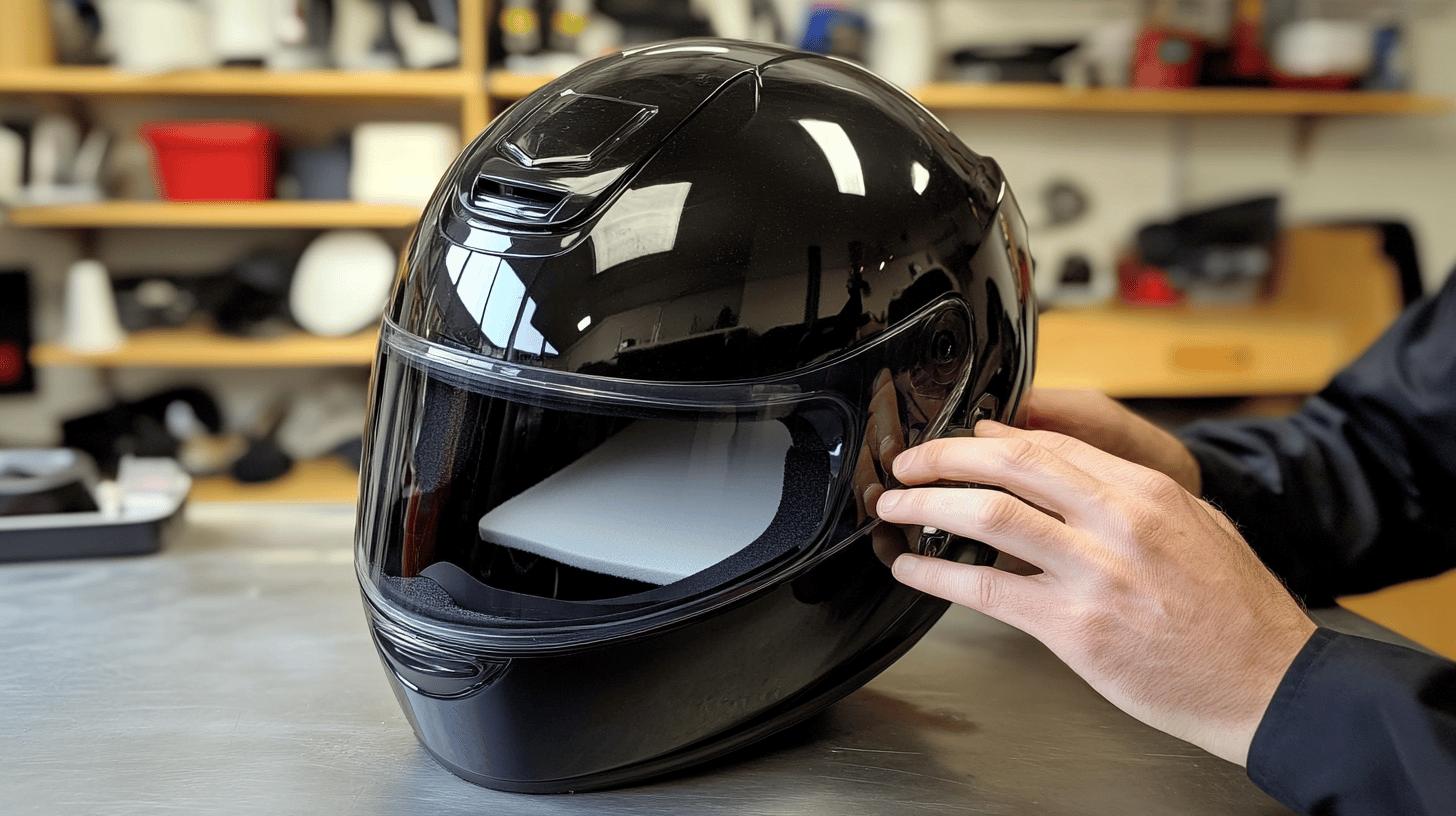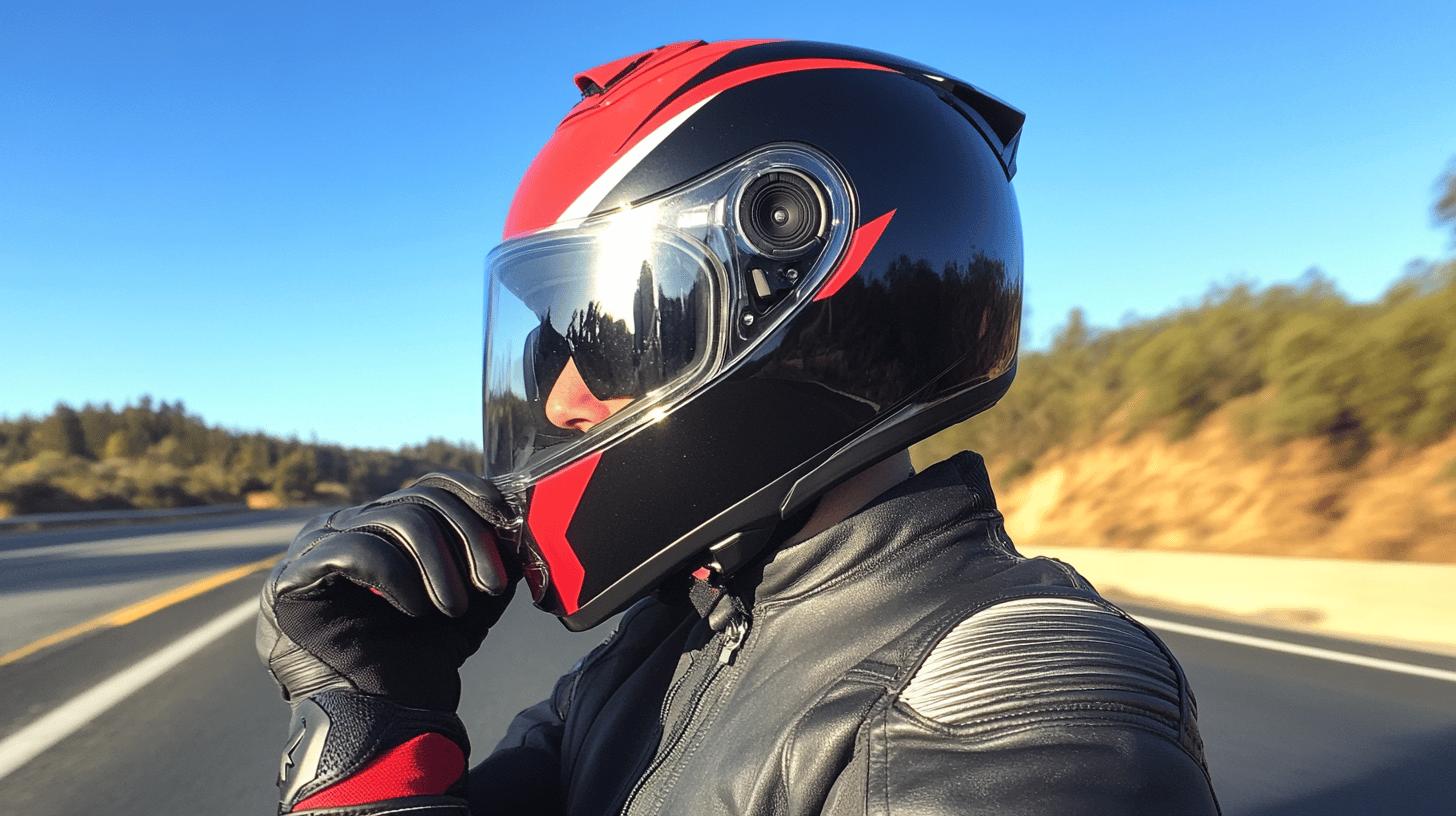Are you tired of the relentless roar disrupting your peaceful ride? Motorcycle enthusiasts know the thrill of the road can be overshadowed by the constant battle with wind and engine noise. But what if the ride could be a symphony of silence instead?
Enter the realm of quieter motorcycle helmet experiences, where reducing noise isn't just a luxury—it's a necessity. Beyond enhancement and comfort, noise management is crucial for safeguarding hearing.
By understanding the root causes of helmet noise and implementing effective solutions, riders can achieve a serene and focused journey.
Understanding the Causes of Helmet Noise

Excessive helmet noise can significantly impact rider comfort and safety. Wind turbulence and engine sounds can elevate noise levels to over 100 dB at speeds exceeding 65 mph, risking hearing damage and reducing situational awareness. Understanding the sources of this noise is crucial for mitigating its effects, allowing for a more comfortable and focused riding experience.
Various helmet characteristics contribute to noise generation. The material and construction of the helmet can either amplify or minimize ambient sounds. Ventilation holes, while essential for airflow, can create entry points for wind noise.
Additionally, the overall fit of the helmet plays a pivotal role; a snug fit can reduce noise by minimizing gaps where sound waves can intrude. Helmet aerodynamics, characterized by streamlined designs with fewer protrusions, are vital for reducing wind resistance and subsequent noise.
- Engine sounds
- Wind turbulence
- Helmet material and construction
- Ventilation holes
- Helmet fit
Identifying these noise factors is essential for effective reduction techniques. By focusing on minimizing these sources, riders can enhance both safety and comfort, leading to a quieter and more enjoyable ride. Understanding these elements paves the way for informed decisions regarding helmet selection and modifications.
Choosing the Right Helmet for Noise Reduction

Selecting a helmet specifically designed for noise reduction is crucial for enhancing the riding experience. The right helmet can significantly reduce wind noise, allowing for a more comfortable and focused ride.
Helmets with superior aerodynamics and sound-blocking features, such as those from Schuberth and Shoei, are recognized for their effectiveness in minimizing wind noise. Investing in a helmet that incorporates these design elements can reduce noise levels without the need for additional modifications.
Recommended Quiet Helmets
Helmets like the Shoei RF-1400 and others in its class are engineered with features that prioritize noise reduction. These helmets not only provide safety but also incorporate advanced design elements to create a quieter ride.
-
Shoei RF-1400: Known for its aerodynamic design, this helmet features Vortex Generators that minimize wind drag and voluminous cheek pads for enhanced sound insulation.
-
Schuberth C4 Pro: Offers a streamlined shape with integrated acoustic collar and reduced wind resistance, making it one of the quietest options available.
-
AGV K6: Combines lightweight construction with advanced aerodynamics and a snug fit to reduce wind noise effectively.
The fit of a helmet is a critical factor in noise reduction. A snugly fitting helmet minimizes air gaps that can allow wind noise to penetrate, ensuring that the helmet's noise-reducing features function optimally. Helmets are designed to fit various head shapes, and choosing one that matches your specific head shape can further enhance its effectiveness in reducing noise. Proper fit not only enhances comfort but also maximizes the helmet's protective and noise-reducing capabilities.
Effective Techniques to Reduce Helmet Wind Noise

External factors significantly contribute to helmet wind noise, disrupting the riding experience. The interaction between wind and the motorcycle's design can lead to increased turbulence and noise. Addressing these external influences is essential for creating a quieter helmet environment.
Utilizing windscreens and wind blockers can substantially reduce motorcycle wind noise. A well-positioned windscreen not only redirects airflow away from the helmet but also provides additional protection from rain and debris. Introducing a helmet wind blocker can further minimize wind entry, enhancing the noise reduction. Incorporating these elements into your riding gear can make a tangible difference.
-
Windscreens: Redirect airflow to minimize direct wind impact on the helmet.
-
Helmet wind blockers: Installed around the helmet's base to prevent wind from entering.
-
Earplugs: Specifically designed for motorcycling, reduce ambient wind noise.
- Helmet skirts: Attach to the bottom of the helmet to block wind from entering.
Neck protection plays a critical role in reducing helmet wind noise. By sealing off entry points around the neck area, riders can significantly lower noise levels. This approach not only blocks wind but also adds warmth, a crucial factor in colder climates.
-
Scarves: Wrap around the neck to block wind entry and provide warmth.
-
Chin curtains: Fit at the helmet's chin area to seal off wind entry.
-
Balaclavas: Cover the head and neck, providing an additional barrier against wind.
Employing these techniques enhances riding comfort by reducing distractions caused by excessive wind noise. Riders can enjoy a quieter journey, which improves focus and overall safety. By integrating these practical solutions, the ride becomes more enjoyable and less taxing on the senses.
Enhancing Helmet Interiors for Soundproofing

Modifying the interior of a motorcycle helmet can significantly reduce noise and enhance rider comfort. By using sound-absorbent materials and strategic accessories, riders can create a quieter environment within the helmet, minimizing the impact of engine and wind noise on their riding experience.
DIY Soundproofing Modifications
Incorporating DIY modifications can be an effective way to enhance soundproofing in a helmet. Techniques such as adding memory foam or fleece padding are simple yet effective methods to achieve this.
-
Select Appropriate Materials: Choose sound-absorbent materials like memory foam or fleece. These materials can be easily inserted into the helmet and are effective in sealing gaps that allow noise to penetrate.
-
Install Padding: Place the memory foam or fleece behind the cheek pads and in the ear holes. This addition creates a tighter fit, reducing wind and engine noise intrusion.
-
Adjust for Comfort and Fit: Ensure the added materials do not compromise the comfort or fit of the helmet. Proper placement is crucial to maintain both noise reduction and rider comfort.
By implementing these modifications, riders can achieve a quieter helmet without sacrificing comfort. The materials used not only block external noises but also provide additional cushioning, enhancing the overall riding experience. These simple adjustments serve as an effective solution for riders seeking to reduce noise without investing in a new helmet.
The Role of Technology in Helmet Noise Reduction

Incorporating technology into motorcycle helmets offers significant benefits for noise reduction and overall riding experience. Noise cancellation systems, equipped with Bluetooth technology, actively neutralize disruptive sound frequencies before they reach the ear.
This technological advancement not only mitigates wind and engine noise but also transforms the helmet into a multifunctional device. By replacing unwanted noise with high-definition audio, riders can enjoy music, navigation instructions, or phone calls, enhancing their focus and comfort on the road. The integration of these systems into helmets is a game-changer, especially for those who prioritize communication and entertainment during long rides.
Noise-canceling devices like the Cardo JBL 45mm Audio Set, developed in collaboration with JBL, are exemplary in the realm of helmet noise reduction. These systems are specifically designed to combat ambient noise through advanced audio engineering.
By delivering superior sound clarity, they not only reduce wind noise but also enhance the auditory experience for the rider. The use of such devices ensures a quieter ride without compromising on the ability to stay connected or entertained, making them an invaluable addition to modern riding gear.
| Device | Features | Benefits |
|---|---|---|
| Cardo JBL 45mm Audio Set | High-definition sound, JBL collaboration | Replaces wind noise with music or calls |
| Sena 50S Bluetooth System | Mesh intercom, advanced noise control | Maintains clear communication, reduces ambient noise |
| Bose Ride System | Active noise cancellation, custom sound tuning | Neutralizes road noise, enhances comfort |
The advantages of these noise-canceling systems are particularly pronounced for long-distance riders. By minimizing auditory distractions, these technologies improve focus and situational awareness, crucial for safety on extended journeys.
Additionally, the ability to seamlessly integrate communication and entertainment features means riders are less likely to experience fatigue associated with constant noise exposure.
This blend of comfort and practicality ensures that technological enhancements in helmet design are not merely a luxury but a necessity for the modern motorcyclist seeking a quieter, more enjoyable ride.
Protective Gear and Accessories for Ear Safety

Motorcycle ear protection is crucial for safeguarding riders against hearing damage and reducing fatigue on long rides. Excessive wind and engine noise can reach levels that are both uncomfortable and harmful, potentially leading to permanent hearing loss.
By incorporating protective gear specifically designed to mitigate these auditory hazards, riders can enjoy a more pleasant and focused riding experience. Ear protection is not only a matter of comfort but a vital component of rider safety, ensuring that external noise does not interfere with situational awareness.
Ear Protection Options
Different ear protection options cater to various preferences and needs, each with its own set of advantages and limitations.
-
Earplugs: These are effective in reducing wind noise by fitting directly into the ear canal. They are a cost-effective solution and offer varying levels of noise reduction. While some riders may find them slightly uncomfortable after extended use, custom motorcycle ear plugs can provide a personalized fit for enhanced comfort and protection.
-
Earmuffs: Silent ride earmuffs serve the dual purpose of reducing noise and keeping ears warm, particularly beneficial in colder climates. They are easy to wear and remove but might not be suitable under all helmet types due to space constraints.
-
Noise-Canceling Earbuds: These advanced devices actively reduce ambient noise using electronic technology. They offer the added benefit of playing music or navigation instructions, enhancing the ride. However, they require charging and can be more expensive than traditional earplugs.
Utilizing these accessories can significantly enhance the riding experience by minimizing auditory fatigue and providing a safer environment for motorcyclists. Protection against excessive noise not only preserves hearing but also contributes to better concentration and enjoyment during rides. By choosing the right ear protection, riders can ensure a quieter, more comfortable journey on the road.
Final Words
Understanding the sources of helmet noise and selecting the right gear can greatly impact rider comfort and safety. From selecting aerodynamically-designed helmets to integrating modern technology, there are myriad solutions for reducing noise.
Techniques such as using screens and helmet accessories offer added soundproofing. Incorporating effective ear protection completes the strategy for a quieter ride.
Knowing how to make a motorcycle helmet quieter not only enhances enjoyment but also preserves hearing, ensuring a safer, more pleasant riding experience.
FAQ
How can I make my motorcycle helmet quieter?
Reducing motorcycle helmet noise involves fitting a windscreen, using a scarf or wind blocker around the neck, or installing a chin curtain. These solutions minimize wind entry and improve riding comfort.
Why are motorcycle helmets noisy?
Motorcycle helmets produce noise due to engine sounds, wind, material, ventilation holes, and improper fit. Speeds over 65 mph can amplify noise to harmful levels, possibly damaging hearing.
What is the best helmet to reduce buffeting?
Helmets like the Shoei RF-1400, Neotec II, and GT-Air II are designed for minimal buffeting using advanced aerodynamics and noise-reducing features, enhancing riding comfort.
Are there budget-friendly quiet motorcycle helmets?
Yes, quiet helmets like the Shoei RF-SR provide noise reduction without exceeding budget constraints, thanks to streamlined design and effective padding.
How effective are motorcycle helmet wind blockers?
Motorcycle helmet wind blockers effectively reduce noise by preventing wind from entering the helmet, thus enhancing rider comfort and reducing potential hearing damage.
Can DIY modifications help soundproof a helmet?
DIY modifications, such as adding memory foam in ear holes or stuffing fleece behind cheek pads, block additional noise and enhance helmet fit for better soundproofing.
What technology is available to reduce helmet noise?
Noise-canceling systems use Bluetooth technology to neutralize sound frequencies, offering enhanced focus and safety. Options include devices like the Cardo JBL Audio Set that improve rider experience by replacing noise with audio.
How does ear protection benefit motorcycle riders?
Using ear protection like earplugs, earmuffs, or noise-canceling earbuds reduces wind noise, protects hearing, and lowers fatigue, ultimately improving the riding experience.

Mark Anderson is a trusted expert with over 25 years of riding experience. At 56, his deep knowledge of long-distance touring and participation in major motorcycle rallies makes him a reliable source for gear recommendations on ProtectiveGearz. Mark’s decades of firsthand experience ensure his advice is authoritative and valuable to riders seeking expert guidance.



